
UK Hydrographic Office Appoints Chief Executive
to make our country secure at home and strong abroad. We remain committed to delivering value for our customers and the global hydrographic community, as a proactive and collaborative partner.”Before joining the UK Hydrographic Office, Vanessa served as senior executive of a data-driven technology organization. With over 25 years of experience in leading strategic change, she brings expertise in growth strategy, digital transformation and customer-focused innovation.

NOC and Royal Navy Renew MOU on Underwater Systems
has renewed a memorandum of understanding (MOU) with the Royal Navy, reinforcing a long-standing partnership in marine science and technology. The MOU, which includes collaboration with the Defense Science and Technology Laboratory (Dstl), the Ministry of Defense (MOD)’s science and technology organization, underscores a shared commitment to fostering innovation and advances in autonomous and robotic underwater systems.With expertise from NOC Innovations, the applied research and commercialization arm of NOC, the agreement will help enhance the UK’s leadership in marine science and technology
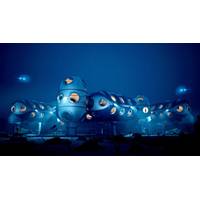
DEEP's #OccupyMare is about Persistent Human Presence Subsea
In November 2000, one American astronaut and two Russian cosmonauts docked their vessel Expedition 1 to the International Space Station, starting a continuous, uninterrupted human presence in space. Today, the oceanic exploration and technology organization DEEP announced its #OccupyMare mission: to Make Humanity Aquatic.The plan is for, on November 3, 2026, to deploy six fully-trained crew to DEEP's Sentinel oceanic habitat system, beginning the era of humanity's continuous presence underwater.According to DEEP, the Sentinel habitat system is deployable anywhere on the planet's
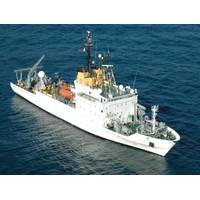
CMRE Open Library is Open for Business
Here’s a library where you don’t have to be quiet. In fact, they want you to talk about it!The NATO Science and Technology Organization (STO) Center for Maritime Research and Experimentation (CMRE) library of scientific literature is a free and open repository of knowledge including technical papers, published articles and reports. It’s now open for business online and available to members of the scientific community everywhere.Founded in 1959 as the SACLANT ASW Research Center, the Center has accumulated decades of significant research, but much of it was restricted or classified
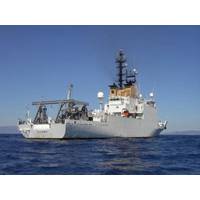
NATO RV Alliance is not just quiet, it’s ice-capable
and Experimentation. Now Alliance flies a new flag, and has a broader mission. What’s the status of Alliance?Several years ago CMRE’s operating model was changed, taking us from NATO ACT (Allied Command Transformation) and placing us as part of the NATO STO (Science and Technology Organization) and we became customer-funded. It was necessary to change the protocol that we used before with ACT and needed to look at other options for the flagging of Alliance. We went through a protracted period of talking with the nations from about 2014 right up until the end of 2015

Second Sonar Test Completed for Royal Canadian Navy
(RCN), completing final assessment of a second TRAPS onboard RCN’s vessels (tests of GTI’s TRAPS onboard HMCS Shawinigan were competed during September 2018).The performance trials of TRAPS with HMCS Glace Bay were conducted by the Department of National Defense’s science and technology organization and the Defense Research and Development Canada (DRDC).Easily deployed and recovered by a single operator, the sonar system showed great potential through the trials period, meeting predicted ranges in target detection, in both passive and active modes against different targets.TRAPS is
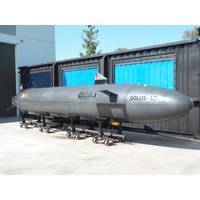
Solus-LR AUV Ready for Testing
anchor, Solus-LR has a target range of 2,000 kilometers and is designed to stay submerged for multi-month missions.The long-range vehicle is being developed under a contract by Public Services and Procurement Canada, on behalf of the Department of National Defence’s (DND) science and technology organization, Defence Research and Development Canada (DRDC), under the All Domain Situational Awareness (ADSA) Science & Technology (S&T) Program. Sea trials and a capabilities demonstration in Indian Arm, British Columbia are expected to conclude by April 2020
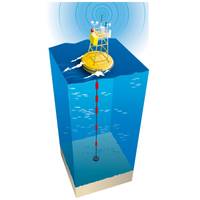
NATO Uses IoT to Study the Oceans
Globalstar Europe Satellite Services Ltd., a wholly owned subsidiary of Globalstar Inc., said that scientists from the NATO’s Science and Technology Organization (NATO STO) are deploying an IoT solution using SPOT Trace and Globalstar satellite communications to further their understanding of the world’s oceans.Research teams from the NATO STO Center for Maritime Research and Experimentation (CMRE), based in La Spezia, Italy, are embedding SPOT Trace devices in freely drifting buoys and setting them afloat in the Mediterranean and in Arctic waters to monitor surface drift behaviour. SPOT
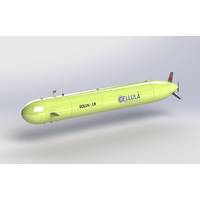
Long Range UUV to Feature Fuel Cell Power
km and is designed to stay submerged for multi-month missions.Cellula said it is moving forward with the project after having received approval to proceed with phase 3 of a contract by Public Services and Procurement Canada, on behalf of the Department of National Defense's (DND) science and technology organization, Defense Research and Development Canada (DRDC), under the All Domain Situational Awareness (ADSA) Science & Technology (S&T) Program.“This S&T program will showcase Cellula’s advanced UUV research and development, combining traditional technologies with innovative

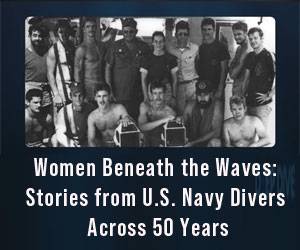

 August 2025
August 2025





